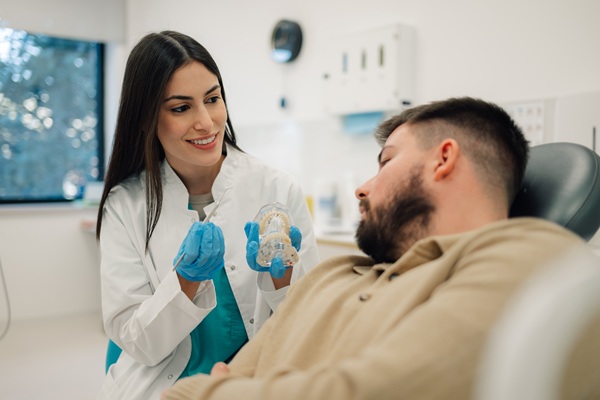The Role of Gum Grafts in Gum Recession Treatment

Gum recession treatment is an essential area of dentistry for those with exposed tooth roots, ongoing sensitivity, or a changing gumline. When gum tissue recedes, the protective layer around the tooth begins to weaken, which may lead to discomfort and possible tooth damage over time. Understanding how gum recession treatment works, along with its benefits, can offer valuable insight for anyone seeking effective ways to address the condition.
Understanding gum recession
Gum recession occurs when the gum tissue surrounding the teeth wears away or pulls back. Various factors, including overly vigorous brushing, plaque buildup, and genetic predisposition, contribute to this issue. Periodontal disease is another common cause; in such cases, bacteria affect the supporting bone and gum tissue around the teeth, leading to gradual recession.
Some notice their teeth appear longer than before or feel increased sensitivity, especially when consuming hot or cold foods. Since these indicators can be subtle initially, the condition may progress significantly before it becomes obvious. The sooner gum recession is recognized, the easier it is for a general dentist to recommend appropriate care or prevention methods.
Why gum recession treatment matters
A receding gumline is not merely a cosmetic concern. Exposed roots are more prone to cavities, and the resulting sensitivity can make it difficult to enjoy meals or beverages at normal temperatures. As the gums recede further, the stability of the tooth may be compromised, potentially leading to more severe oral health complications.
Gum recession treatment serves as a protective measure and a solution for existing damage. The dentist may manage moderate cases through preventative care, such as gentler brushing techniques or medicated mouth rinses. However, advanced recession often requires surgical intervention. Gum grafts provide a reliable method to cover the exposed areas and re-establish a healthier, more natural gumline.
What are gum grafts?
The most popular gum recession treatment is a gum graft. These procedures are specialized techniques the dentist uses to reinforce or restore gum tissue in areas where recession is significant. This approach helps protect teeth that have lost their natural gum covering. Most gum grafts involve taking donor tissue from one part of the mouth—commonly the palate (roof of the mouth)---and suturing it over the exposed tooth root. Below are three of the most common techniques a general dentist will use:
- Connective tissue grafts: The dentist creates a small flap in the roof of the mouth and removes connective tissue from underneath it. They then place the harvested tissue over the recession site and suture it together.
- Free gingival grafts: The dentist harvests a thin layer of tissue directly from the palate (without creating a flap) and then attaches it to the receding gum area. This option benefits those with thin gum tissue and those who need additional support.
- Pedicle grafts: The dentist partially cuts and shifts the tissue adjacent to the affected site to cover the exposed root and then stitches it into place. Sufficient nearby gum tissue is necessary for this method.
Recovery from gum recession treatment
Recovery usually involves mild swelling or tenderness, especially if the dentist harvested tissue from the palate. Over-the-counter pain relief or prescription medication helps manage discomfort. Dentists advise patients to avoid brushing or flossing the graft site for a set period to allow proper healing. They also often suggest adopting a lukewarm diet, along with an antimicrobial mouth rinse to minimize the risk of infection. Further, follow-up appointments are important to check the graft and ensure it bonds successfully to the editing gumline.
Benefits for long-term gum recession treatment
Gum grafting plays a significant role in long-term gum recession treatment by lowering the risk of complications. Covering the exposed roots can significantly reduce sensitivity, making everyday activities like eating and drinking more comfortable. Patients frequently note that restoring the gumline enhances the smile's appearance, helping them feel more at ease in social situations.
Additionally, grafted gum tissue helps shield the roots from plaque buildup and bacterial growth. This reduction in vulnerability can prevent future periodontal problems and preserve the stability of the tooth. By reinforcing the gumline, the procedure not only addresses current issues but also acts as a barrier against worsening oral health conditions.
Restore healthy gums and gum line
Gum grafts are the cornerstone in gum recession treatment, offering a robust solution when recession threatens comfort and tooth stability. By covering exposed tooth roots and restoring the natural gumline, grafts can reduce sensitivity, enhance the defense against decay, and improve overall oral health. If you notice signs of gum disease or recession, contact Pacific View Smile Center to schedule an appointment.
Request an appointment here: https://www.pacificviewsmilecenter.com or call Pacific View Smile Center at (310) 304-1854 for an appointment in our Santa Monica office.
Check out what others are saying about our dental services on Yelp: Gum Recession Treatment in Santa Monica, CA.
Related Posts
Gum disease is very common in the United States, which often leads many to believe it is not as serious of a concern as it actually is. However, gum disease should be taken seriously, and learning more about it can help you determine why it is important to treat and prevent gum disease in order…
Gum disease is a serious condition that can result in a need for periodontal treatment. Periodontal treatment is often necessary to destroy the infection and prevent it from worsening. Often, without treatment, a case of gum disease can become advanced, resulting in tooth loss, receding gums, and even jaw deterioration, all of which can be…
Looking for information on preventive dentistry? Read on to learn more. A good preventive dentist can save you money on significant tooth problems, pain, and costly treatments in the future. All treatments or procedures that prevent tooth decay, tooth damage, and gum disease fall under preventive dentistry. Fortunately, when preventive dentistry is incorporated into daily…
Preventive dentistry can help you avoid issues like tooth decay and gum disease, which are the most common issues that dentists deal with. Keeping your teeth and gums healthy starts with having a consistent oral hygiene routine.Many of the dental issues that you might find yourself dealing with start with the bacteria in your mouth.…


